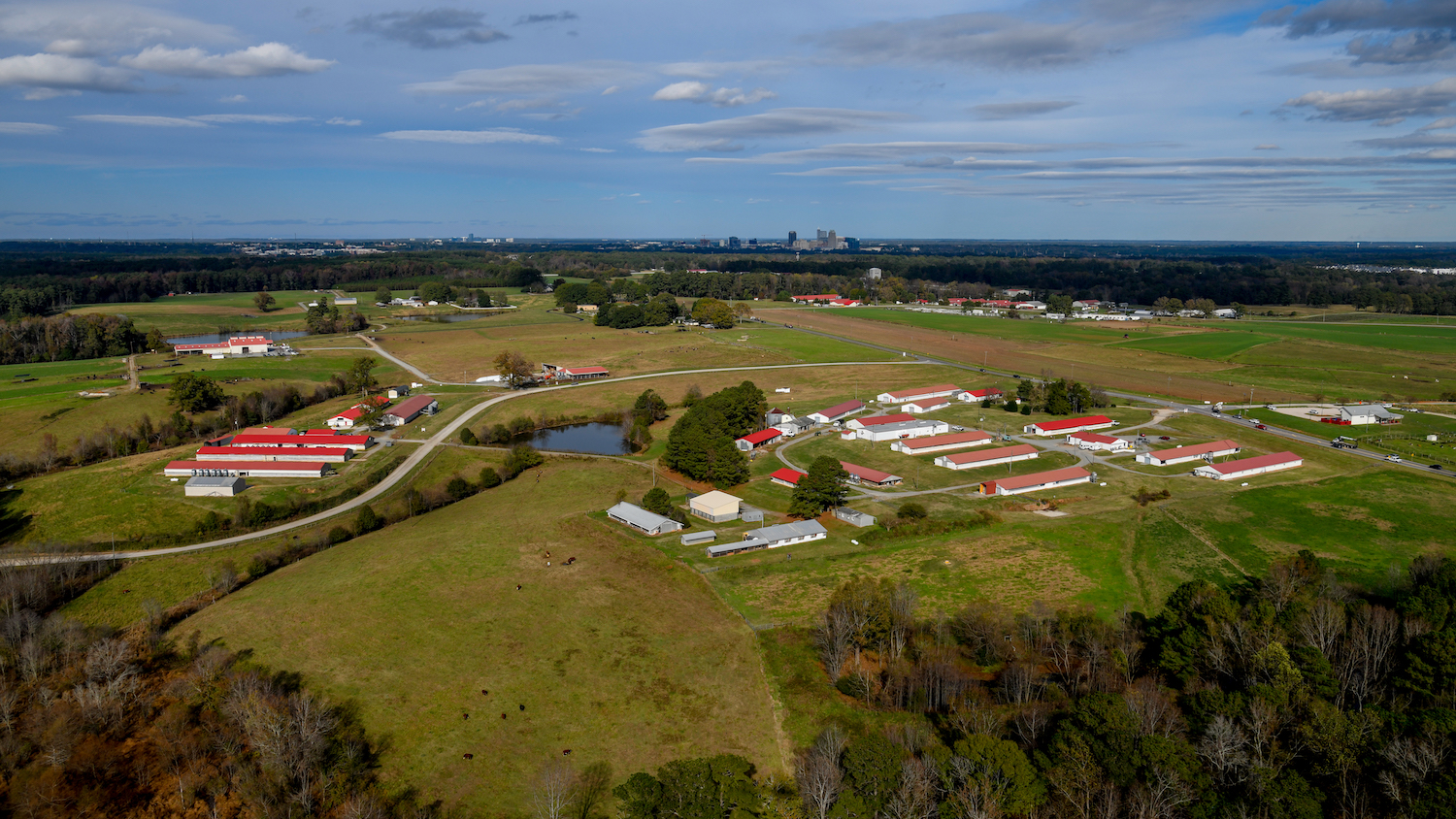Agriculture’s Promised Land?
As major companies pledge support for regenerative agriculture, consumers and growers have important questions. For starters, what exactly is it? And can it play a role in North Carolina agriculture’s future?
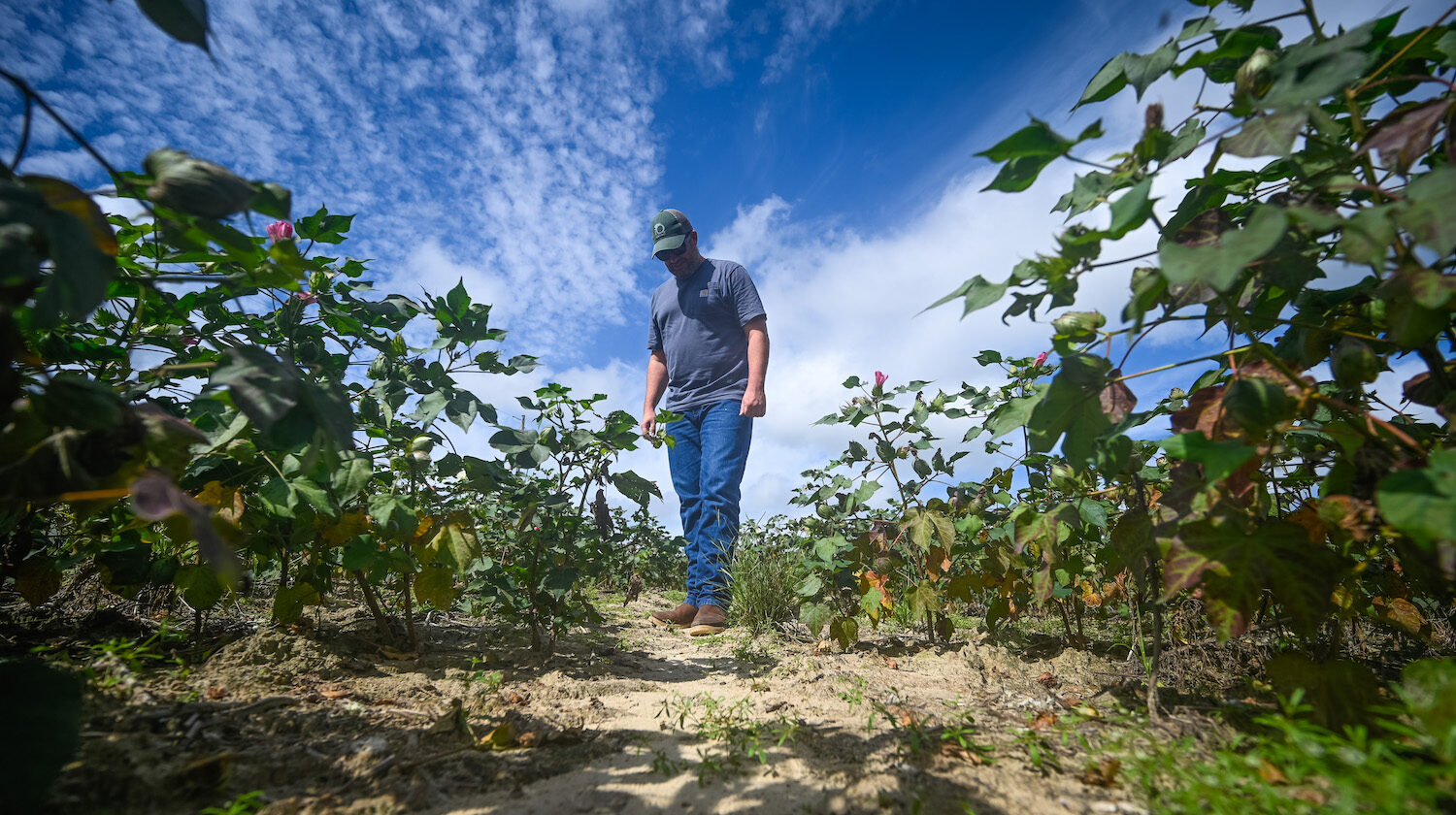
Regenerative agriculture: It’s a buzzword that’s easy to sell but hard to define.
Regenerative agriculture’s professed goal is to use the soil and environmental ecosystem—rather than conventional fertilizers and tillage—to power farm productivity, reducing off-farm inputs, mitigating climate impacts and improving biodiversity and habitats.
It’s billed as a solution for global food security, the climate crisis and environmental preservation—basically, why we could press pause on Occupy Mars. But these promises are a tall order.
Where Are the Goalposts?
Regenerative agriculture surfaced as a grassroots movement centered in the Midwest during the 1990s as climate debates intensified. The concept is based on the soil improvement practices of self-sufficient, pre-World War II farms. The emphasis is on using soil biology, rather than synthetic fertilizers, to power crop growth.
Definitions of regenerative agriculture vary, but the core principles are outlined in the graphic below.
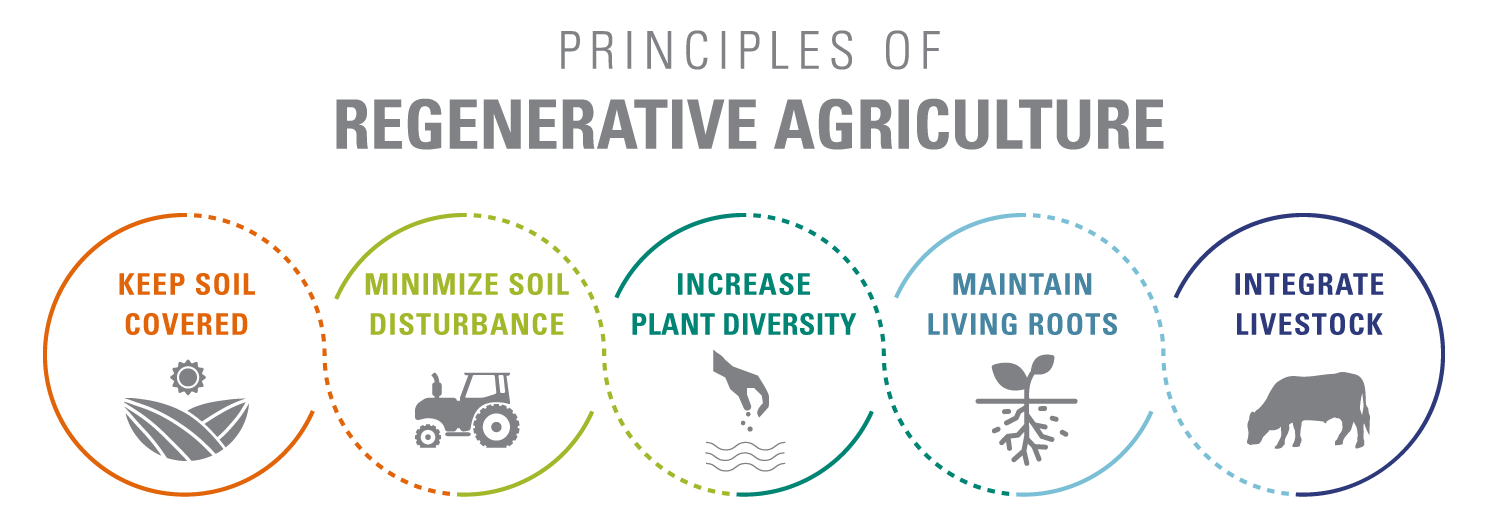
What do these principles look like on the farm?
- crop rotation
- cover cropping, ideally with multiple plant species
- no- or low-till systems
- soil management to support soil’s chemical, biological and physical properties
- rotational livestock grazing
While many of these individual practices are commonplace in North Carolina, the combination is not. And while there’s general agreement on the intrinsic value of productive soils, the amount of regenerative practices required to merit the title is unclear.
Regenerative agriculture’s proponents tout its benefits to farmers (input savings and crop productivity) and the environment (reduced greenhouse gas emissions). They also point to its place in emerging carbon markets, in which companies wanting to offset their carbon emissions pay farmers to capture and sequester carbon in their soil.
The trouble is, it’s tricky to define universal guidelines when the farms where regenerative agriculture could take root vary so greatly in size, soil type and crops produced.
A Label Maker
While some think of regenerative agriculture as a fringe movement, major corporations have pledged enormous resources to support regenerative growers. General Mills, Cargill, PepsiCo, Walmart and others have adopted regenerative agriculture as a matter of corporate responsibility and integrated the term into their marketing. Forbes called it the “next trend in food retailing.”
The 2022 United Nations Climate Change Conference included a session on regenerative agriculture, and a movement is afoot to include regenerative agriculture in the 2023 U.S. Farm Bill.
But the term’s ambiguity and lack of evidence-based research make the regenerative agriculture tag a big maybe with some farmers.
“We do a lot of regenerative practices on our farm, but everything is location-specific.”
“That’s one of our problems—too many labels,” says Davon Goodwin, a first-generation farmer growing grapes on 42 acres in Laurinburg, North Carolina. “I don’t want to be put in a group.”
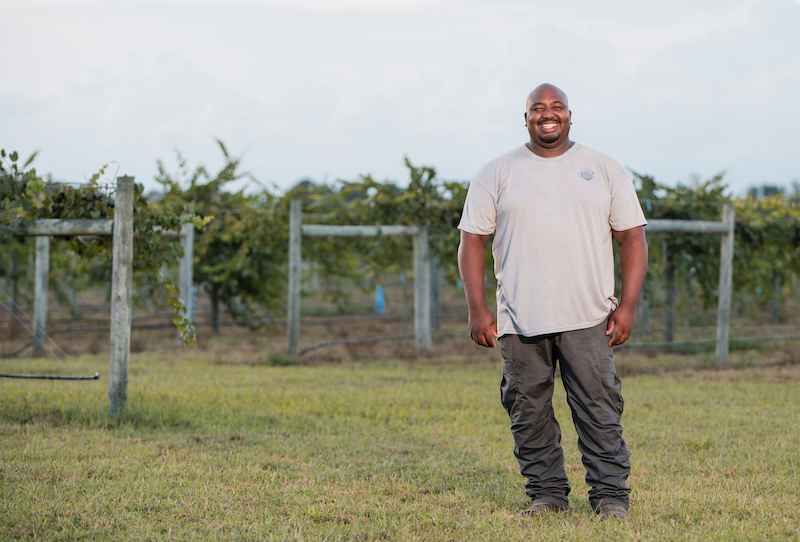
Indeed, there’s no shortage of labels. “Climate-smart.” “Sustainable.” “Renewable.” “Resilient.” But are these terms relevant, different or, more importantly, doable in North Carolina?
“We do a lot of regenerative practices on our farm, but everything is location-specific,” Goodwin says. “You can’t stand on the rich soils of the Midwest and tell me how to build carbon in my sand.”
For farmers statewide, North Carolina State University researchers are investigating and debating these ideas.
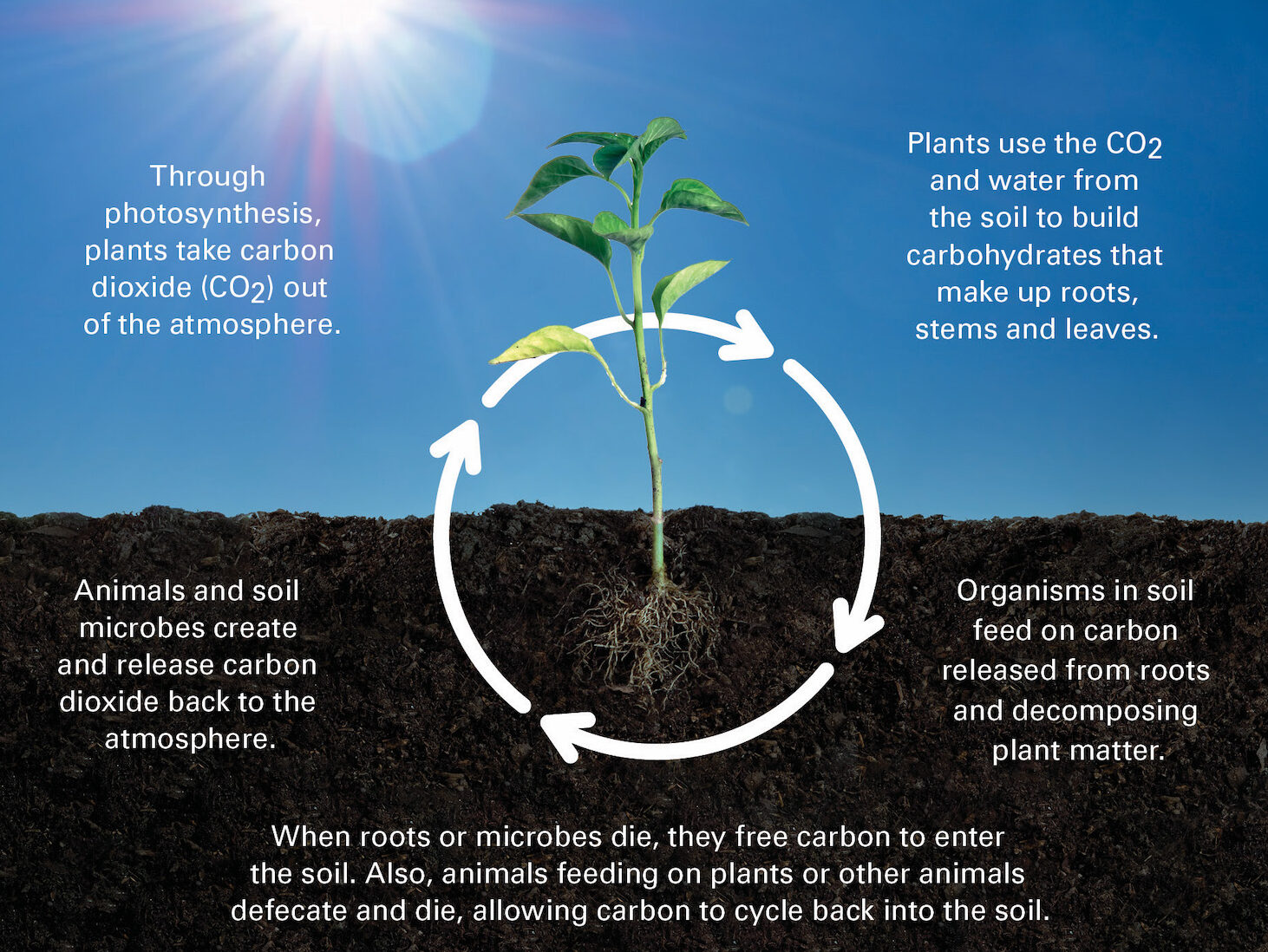
Capricious Carbon
In any conversation on climate and soil health, carbon is the headliner. That’s because soil has the ability to pull carbon out of the atmosphere and store it within a network of organisms where carbon can support living things.
Storing carbon underfoot isn’t straightforward. Microbes and other soil life can gobble up carbon in a process that accelerates as temperature rises.
Soil management practices like cover cropping to boost soil carbon produce different results depending on the soil type, structure and climate.
For North Carolina farmers, it’s not a cut-and-paste from the post-glacial soils of Illinois.
As NC State soil scientist Deanna Osmond says, “The genetic potential of North Carolina’s soils to sequester carbon is totally different than the Midwest. Their mineralogy, texture and freeze-thaw cycle is unlike here, where our soils never stop respiration. We churn (through) carbon almost year-round.”
NC State agroecology expert Michelle Schroeder-Moreno, director of the Center for Environmental Farming Systems (CEFS), explains that four things speed up organic decomposition: moisture, heat, carbon-to-nitrogen ratio and oxygen.
“Most of our North Carolina soils have low organic matter,” says Schroeder-Moreno, who holds the W.K. Kellogg / Blue Cross and Blue Shield of North Carolina Foundation Endowed Distinguished Chair in Sustainable Community-Based Food Systems. “The Blacklands soils of eastern North Carolina are only rich in organic matter because they were underwater—anaerobic—for millennia.”
“The hot, humid conditions in North Carolina speed up organic matter decomposition in the majority of our soils. When we add tillage and other agricultural practices that bury organic matter or don’t perform practices that add organic matter, such as leaving previous crop or cover crop residues, it’s a zero-sum game. We are speeding up organic matter loss to an even greater extent in agriculture in North Carolina.”
How Much Is Enough?
Growers understand the benefits of adding organic matter to the soil to build carbon.
Gary Hendrix farms almost 8,000 acres of rotating crops in the Sandhills of Raeford. “Organic matter softens the land,” he says. “We strip-till and cover crop, especially to improve marginal land. Increasing organic matter has increased yield on our best soils and made others (produce more consistently) each year.”
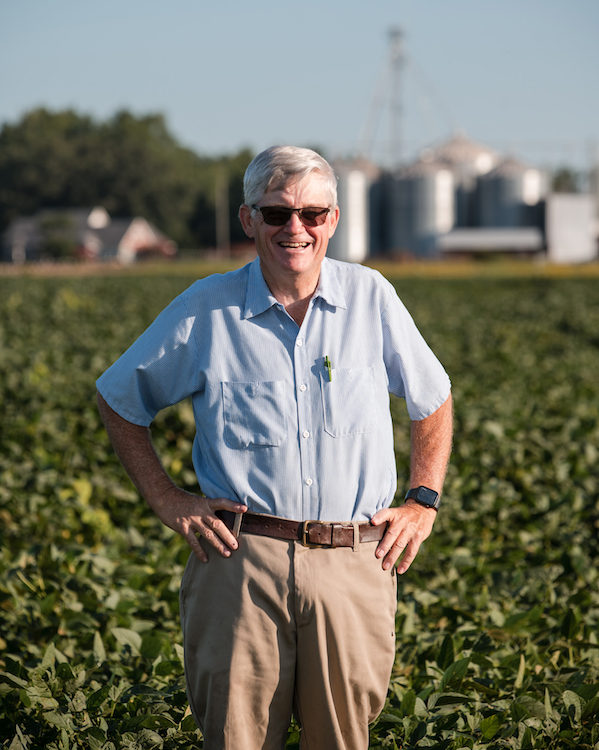
“It doesn’t matter what you call it;
I like to plant in trash.”
His primary interest in carbon is less about long-term sequestration than soil moisture retention.
“I tell folks that we’re always three days from a drought and trying to stretch it to five.” Leaving organic matter or plant residue from a crop on the soil surface is the key to resilience in Hendrix’s operation. “It doesn’t matter what you call it; I like to plant in trash.”
Hendrix’s practices check at least three of regenerative agriculture’s boxes: strip-tilling, planting cover crops and managing soil diversity. Is that enough for him to call regenerative “bingo!” and benefit somehow?
Science-First Soils
As interest in regenerative agriculture, climate markets and incentive programs evolve, NC State is knee-deep in research and extension education.
“In North Carolina, we’ve been encouraging conservation tillage for 50 years. It’s not new,” says Osmond. “Some of our research plots have been testing tillage practices for that long. And there’s no choice on crop rotation here. There’s too much disease pressure not to.”
Today, sustainable agriculture studies in cover crops, climate adaptation and grazing management leapfrog across disciplines at NC State. For example, crop science graduate student Matthew Starr studies amino acid-based biostimulants—a way of feeding the soil microbiome to encourage nutrient cycling. He is researching seed treatments and soil-applied biostimulants to improve plant resiliency and cotton lint quality.
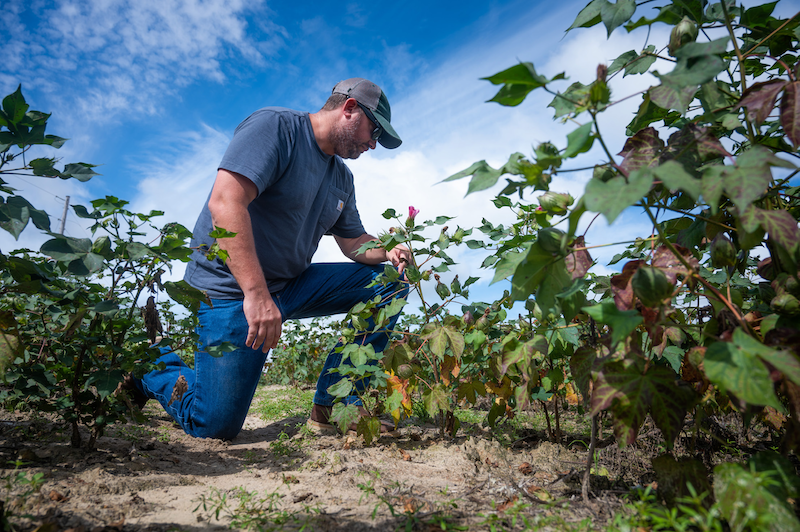
“We’re at a point of change, and I think that regenerative practices are the spearpoint,” Starr says. “Increasing soil biodiversity positively impacts soil function for crop productivity, environmental quality and, most importantly, yield.”
Asked if these approaches are practical for any grower, Starr says, “I think regenerative agriculture should be seen as a diverse set of tools a farmer can use. Biostimulants are one of the most immediately accessible practices because they don’t require new equipment nor special training—just forward thinking.”
“We’re at a point of change, and I think that regenerative practices are the spearpoint.”
Another tool farmers can use: cover crops, which prevent soil erosion and nutrient loss to the elements between plantings. Only 12% of North Carolina farms use them. Why not more?
As NC State sustainable ag researcher Chris Reberg-Horton explains, “There’s a frustrating lack of simple answers in cover crop use. An infinite number of variables affect performance.”
To help growers make sense of those variables, Reberg-Horton’s Precision Sustainable Agriculture Network is plugging away at web-based decision tools for cover crop species selection, weed control, nitrogen management and even quantifiable soil carbon storage and greenhouse gas emissions.
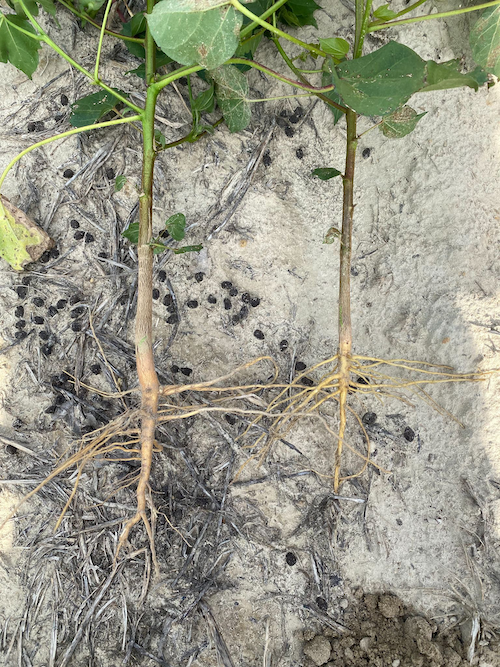
He’s betting on artificial intelligence’s ability to provide practical value to farms. Researchers are working with remote sensing software to map the amount of nitrogen produced at every point in a field to guide fertilizer application in real time.
NC State’s Climate Adaptation through Agriculture and Soil Management group (CASM) is tackling these issues with an interdisciplinary approach. The group is investigating multiple avenues with an eye to farm productivity and profitability.
“There’s a frustrating lack of simple answers in cover crop use. An infinite number of variables affect performance.”
CASM soils researcher Alex Woodley, for example, is evaluating enhanced efficiency fertilizers’ (EEFs’) ability to reduce farm costs and environmental impact while generating financial incentives.
“Nitrogen fertilizers are one of the most energy-intensive inputs on a farm,” Woodley says. “Improving nitrogen use efficiency and reducing nitrogen inputs with EEFs could significantly lower the global energy footprint of agriculture, and in the future potentially open a new revenue stream for North Carolina farmers through reduced greenhouse gas emission payments in the carbon market.”
Are Heifers a Hard Stop?
Meanwhile, Matt Poore of NC State Extension’s Amazing Grazing program hosts adaptive grazing management training that emphasizes location-specific grazing practices. He’s a strong advocate of the value of using livestock to speed up nutrient cycling.
“Every grower wants to increase soil organic matter. But residual plant nutrients are locked in fiber,” Poore says. “Grazing animals can break that into simpler forms and smaller particle sizes to stimulate the biological system. They have the ability to degrade and cycle carbon through pasture ecology.”
Still, if integrating livestock is required to merit the regenerative agriculture label, it may be a hard stop for some producers. North Carolina farmers may have row crops, livestock or both, but rarely do livestock forage on large-scale cropland.
The logistics of fencing and watering animals are a challenge for large-scale farmers, and grazing on small-acreage specialty crops can be impractical.
While there is a thriving community of small-scale producers who embrace integrated livestock systems, a lack of familiarity and infrastructure for animals are common barriers for larger-scale farmers.
Forage extension specialist Miguel Castillo helps producers with livestock logistics through a vast on-farm climate-smart grazing project. He and his colleagues with extension programs in eight other states will train and pay livestock pasture managers a total of $12.2 million to adopt and document proven climate-smart management practices.
Creative Grazing Is Growing
An earlier Sustainable Agriculture Research and Education-funded project investigated the potential to raise fast-growing stocker cattle that graze on cover crops. As an NC State animal science Ph.D. student, Jordan Cox-O’Neill evaluated the effects on the land and livestock from grazing winter cover crop mixes.
“The idea is growing. I’ve seen a dozen or more producers in the area contract grazing cropland since our project.”
“Although it was a short study, we saw a tendency of greater yield and no difference in soil compaction from the grazed and non-grazed fields,” Cox-O’Neill says. One farmer who used no-till planting techniques for his soybean crop after winter grazing harvested a record crop of 80 bushels per acre.
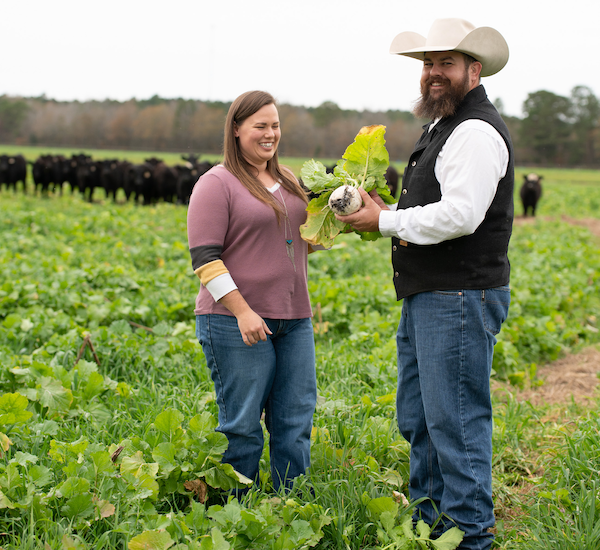
The project was so successful that Cox-O’Neill decided to continue grazing 120 to 210 calves on leased land. Despite the logistics of portable fencing and watering, it’s been profitable enough for both her and the farmers to continue.
“It’s been a great relationship, but there does have to be a great deal of communication around planting and harvest. But the idea is growing,” Cox-O’Neill says. “I’ve seen a dozen or more producers in the area contract grazing cropland since our project.”
Making Promises Pay Off
Regenerative agriculture’s future in North Carolina will depend on whether it can deliver promised benefits in an affordable way. Debate may occur online, but action happens in the field.
Schroeder-Moreno, who focuses on sustainable farming practices, says that debates about the precise definition of regenerative agriculture are important to the research community but may delay or lead to missed opportunities for farmers to implement good production practices.
“The priority should be to focus on these good practices and bring more people to the table of sustainability.”
“Within CEFS we have been researching sustainable agriculture practices for close to 30 years, with many of those now considered to fall under regenerative agriculture practices,” she says. “We know cover crops, crop and animal rotations, reduced tillage and practices that add perennials can increase diversity, organic matter and other agricultural benefits for North Carolina farmers.
“The priority should be to focus on these good practices and bring more people to the table of sustainability.”
Cox-O’Neill, the Ph.D. graduate who conducted grazing research, sees regenerative agriculture as giving farmers new options.
“I’m a big believer in using regenerative agriculture practices,” she says. “In some cases, they are very cost-effective and you get good production from them, but they don’t always fit. I try to match a blend of commercial agriculture and regenerative practices when they fit the situation.”
Hendrix says that no matter how it’s defined, marketed or incentivized, regenerative agriculture won’t be adopted at a larger scale without sound science and small business buy-in. Practices such as cover cropping, like everything else on the farm, have to pay off on the balance sheet, he says.
“We want to leave the land better than we found it, but we base our decisions on science and economics.”
- Categories:
